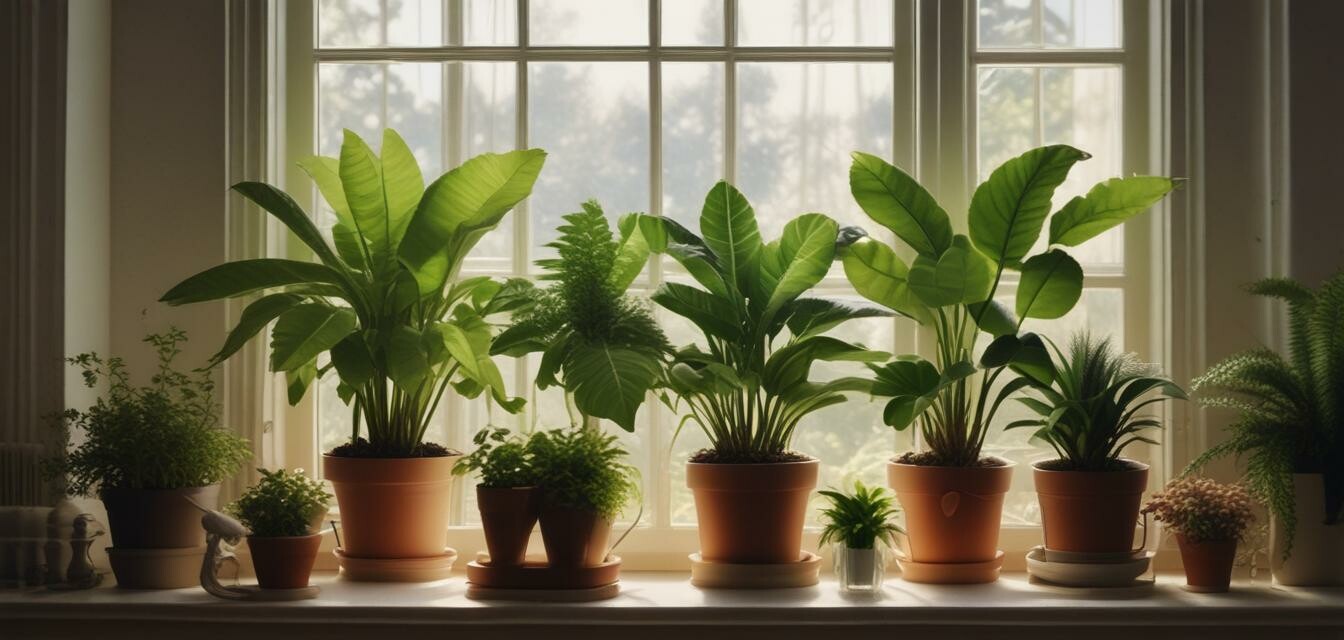
Understanding houseplant lighting needs
Key Takeaways
- Different houseplants have unique lighting requirements.
- Understanding light levels—low, medium, and high—is essential.
- Adjustments for seasonal changes in light can improve plant health.
- Optimal placement can maximize your plants' growth potential.
- Using artificial lights can help in low-light situations.
Maintaining the vitality of your houseplants means understanding their lighting needs. Each plant species thrives under different conditions, which influences their growth and overall health. In this article, we will delve into the specifics of houseplant lighting, covering essential topics that will empower you to create an ideal environment for your leafy friends.
The importance of light for houseplants
Light is one of the most crucial factors for plant vitality. It facilitates photosynthesis, which is how plants generate energy. Without adequate light, even the most resilient of plants can suffer, leading to poor growth or, in extreme cases, plant death.
Types of light
There are three main categories of light that plants need:
- Direct light: Sunlight that reaches the plant without any obstruction. Ideal for sun-loving plants like succulents and cacti.
- Indirect light: Sunlight that is diffused through leaves or obstacles. Perfect for most houseplants, such as peace lilies and pothos.
- Low light: Limited natural light, which is suitable for plants needing less light, such as snake plants and ZZ plants.
Understanding light levels for houseplants
| Light Level | Description | Best Houseplants |
|---|---|---|
| High Light | Bright, direct light for most of the day. | Succulents, Cacti, Ficus |
| Medium Light | Filtered light or indirect sunlight for several hours a day. | Snake Plant, Pothos, Peace Lily |
| Low Light | Very little sunlight; often in shaded areas. | ZZ Plant, Cast Iron Plant, Spider Plant |
How to assess light in your home
Knowing your home’s lighting situation will guide you in choosing the right houseplants or optimizing their placement. Here are methods to assess the light levels:
- Observe sun patterns: Note how sunlight moves through your space at different times of the day.
- Use a light meter: An affordable tool that measures light intensity to give you more precise readings.
- Consider seasons: Light intensity can vary with seasons, affecting how plants should be placed.
Signs your plants are not getting enough light
It is crucial to recognize indications that your plants are not thriving because of insufficient light:
- Leaves turning yellow or dropping.
- Stunted growth or leggy appearance towards the window.
- Pale foliage, indicating a lack of chlorophyll production.
Adjusting to seasonal changes
As seasons change, so do the light levels. It's essential to adjust your plants accordingly for consistent growth. Ensure they are getting optimal light during fall and winter by:
- Moving them closer to windows.
- Rotating your plants for uniform light exposure.
- Using grow lights when necessary.
Artificial lighting solutions
In situations where natural light is absent, or the light is inadequate, artificial lighting can be of great help. Here's how to effectively use grow lights:
- Choosing the right type: Full-spectrum LEDs are popular due to their energy efficiency and effectiveness.
- Placement: Position lights 12-24 inches above plants, adjusting based on their needs.
- Duration: Generally, 12-16 hours of light is sufficient for most houseplants.
Using Reflective Surfaces
To maximize light exposure, you can use reflective surfaces around your plants. Here’s how:
- Mirrors: Strategically place them to redirect light.
- White walls: Paint walls in light colors to help reflect light onto your plants.
- Foil or Mylar: Enhance light distribution by positioning foil around your plants.
Conclusion
Understanding houseplant lighting needs is fundamental for anyone wanting to grow vibrant plants indoors. By knowing your plant's specific requirements and adjusting their environment accordingly, you can cultivate a lush urban oasis on your balcony or in your apartment. For more insights, visit our Gardening Tips section, where you can learn about caring for your plants and optimizing your small spaces.
Pros
- Enhances plant growth and vitality.
- Can significantly reduce maintenance issues.
- Allows for a broader range of houseplants in low-light environments.
Cons
- Requires space and setup for artificial lighting.
- Potentially higher energy costs.
- Involves constant observation and adjustments.